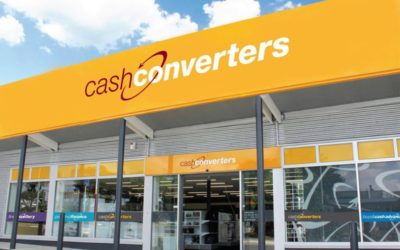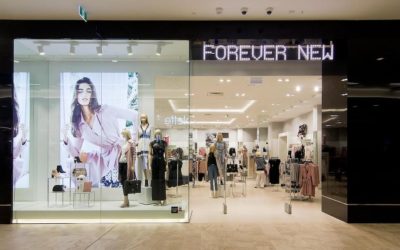“Vorsprung durch Technik” (Progress through Technology) is the international Audi slogan and a promise that is not only reflected in its premium cars, but also in its mission, which is to focus on digitisation, sustainability, and urbanisation. Audi’s car dealers also prioritise innovation and a unique and future-oriented customer experience. More and more customers ask for customised cars which cannot all be displayed in the shops, making virtual configuration systems and digital media play an important role in the modern customer journey.
To facilitate this virtualisation, Audi provides 800 digital elements, like iPads, to over 2,000 Audi car dealers from Los Angeles to Berlin to Singapore. Hence, it’s crucial for Audi to be able to create and maintain a solid network solution that provides all sites with secure, reliable Wi-Fi.
Thomas Bayerl is in charge of the Digital Business Infrastructure and Processes at Audi and decided that Meraki would be the best choice for Audi’s global Wi-Fi network infrastructure. Read on to find out how Audi manages a network of access points, switches, and security appliances with Meraki across the globe.
Original challenges
In 2011, Audi opened its first Audi Cities. Audi City showrooms have been 100% digitalised to offer customers the best possible experience with the help of “digital elements”: Audi City uses “power walls” to simulate the driving experience in the driver’s seat.
With the help of touch screens or iPads, customers can browse through the whole Audi portfolio, and build and configure a 1:1 scale vehicle according to their own individual needs and wants.
The performance of those digital devices depends on a stable WiFi network.
Challenges of the network before Meraki:
- Audi had worked with a traditional network provider before Meraki.
- After the first Audi Cities were launched, Audi decided to take some of the “digital elements” and provide them to regular Audi car dealers and extended their WiFi networks. However, with the former network infrastructure, highly trained network experts were needed to configure and monitor the complex network devices.
- Audi compared various network providers according to price and performance.
Why Meraki?
All hardware that Audi is planning to use in shops is tested, qualified, and certified in an in-house laboratory, making sure that new solutions are thoroughly tested before going live.
When Audi looked into a new networking products, it was the Cisco Account Manager that Thomas Bayerl was in touch with who suggested trying the Meraki cloud-managed solutions, so Bayerl ordered free trial hardware.
Hence, Bayerl tested Meraki devices in Audi’s lab and was convinced of the solution. Since then, every new Meraki product gets tested in the lab and in 100% of all scenarios, the products get ordered for the shops.
Decision-making criteria:
- Centralised and remote management: The Audi IT team of six people manages 2,000 sites around the world from their headquarters in Ingolstadt, Germany. Meraki offers full visibility and monitoring options as well as the ability to troubleshoot remotely – all critical criteria for Audi.
- Reliability: Audi values the high quality of Cisco Meraki products and can rely on it for everyday business needs.
- Easy configuration and management: It is important to Audi that the network solution is easy to manage. With Meraki, Audi did not need to arrange extra training or hire additional network experts, since managing and installing the network with the Meraki dashboard is uncomplicated and intuitive.
All Cisco Meraki products that we used so far just work. You configure everything and they run very well. – Thomas Bayerl, AUDI AG
According to Bayerl, it needs to be stressed that the cooperation between Audi and Meraki is extremely positive. Audi has a personal point of contact from Meraki Sales and Engineering that work closely with Audi and provide them with new trial devices when needed:
I like that Meraki is so solution oriented and that our cooperation works absolutely uncomplicated. – Thomas Bayerl, AUDI AG
Deploying Meraki
Installation and configuration:
- Audi uses Meraki access points, switches, and security appliances and is currently trialling Systems Manager, Meraki’s Enterprise Mobility Management solution, to manage their iPads in the shops.
- A team of six manages, configures and monitors the network structure of all global sites. The team configures the devices in the Meraki dashboard, often when these are still being delivered. As soon as the devices arrive in an Audi shop anywhere in the world, the settings are pushed to the devices through the cloud automatically.
- The configuration and setup of the devices is very quick. Audi uses templates to clone settings for groups of devices. While the equipment is being delivered to the shop, Audi already takes care of the configurations remotely. Then, a service provider deploys and installs the devices on site.
- In many cases there is no IT or service provider on site, so the staff is provided with a short instruction guide on how to set up the network, which works well too.
Getting Meraki components up and running is straightforward, easy and fast. Once a device is connected to the internet, it automatically pulls the configuration settings and it takes about 10 minutes and it’s working. – Thomas Bayerl, AUDI AG
Network structure:
- Audi protects its network with Meraki’s Firewall Layer 3 and 7 rules and prioritises applications to control the network usage and guarantee sufficient bandwidth.
- The team created different SSIDs for Audi employees, guests, VIPs and regular customers, which was done in just a few minutes over the dashboard. Guests and customers access the guest network with different devices, such as computers or mobile devices. However, at the same time, Audi uses iPads that access the WiFi and are used as a control tool and visual engine. Hence Audi created different SSIDs, and made sure to de-prioritise applications such as YouTube for certain user groups to ensure sufficient bandwidth for Audi’s iPads.
- Audi can set up site-to-site VPN with Meraki with just just a few clicks, and built a central hub that channels, for instance, the central monitoring system.
Decision-making criteria:
- Centralised and remote management: The Audi IT team of six people manages 2,000 sites around the world from their headquarters in Ingolstadt, Germany. Meraki offers full visibility and monitoring options as well as the ability to troubleshoot remotely – all critical criteria for Audi.
- Reliability: Audi values the high quality of Cisco Meraki products and can rely on it for everyday business needs.
- Easy configuration and management: It is important to Audi that the network solution is easy to manage. With Meraki, Audi did not need to arrange extra training or hire additional network experts, since managing and installing the network with the Meraki dashboard is uncomplicated and intuitive.
All Cisco Meraki products that we used so far just work. You configure everything and they run very well. – Thomas Bayerl, AUDI AG
According to Bayerl, it needs to be stressed that the cooperation between Audi and Meraki is extremely positive. Audi has a personal point of contact from Meraki Sales and Engineering that work closely with Audi and provide them with new trial devices when needed:
I like that Meraki is so solution oriented and that our cooperation works absolutely uncomplicated. – Thomas Bayerl, AUDI AG
Deploying Meraki
Installation and configuration:
- Audi uses Meraki access points, switches, and security appliances and is currently trialling Systems Manager, Meraki’s Enterprise Mobility Management solution, to manage their iPads in the shops.
- A team of six manages, configures and monitors the network structure of all global sites. The team configures the devices in the Meraki dashboard, often when these are still being delivered. As soon as the devices arrive in an Audi shop anywhere in the world, the settings are pushed to the devices through the cloud automatically.
- The configuration and setup of the devices is very quick. Audi uses templates to clone settings for groups of devices. While the equipment is being delivered to the shop, Audi already takes care of the configurations remotely. Then, a service provider deploys and installs the devices on site.
- In many cases there is no IT or service provider on site, so the staff is provided with a short instruction guide on how to set up the network, which works well too.
Getting Meraki components up and running is straightforward, easy and fast. Once a device is connected to the internet, it automatically pulls the configuration settings and it takes about 10 minutes and it’s working. – Thomas Bayerl, AUDI AG
Network structure:
- Audi protects its network with Meraki’s Firewall Layer 3 and 7 rules and prioritises applications to control the network usage and guarantee sufficient bandwidth.
- The team created different SSIDs for Audi employees, guests, VIPs and regular customers, which was done in just a few minutes over the dashboard. Guests and customers access the guest network with different devices, such as computers or mobile devices. However, at the same time, Audi uses iPads that access the WiFi and are used as a control tool and visual engine. Hence Audi created different SSIDs, and made sure to de-prioritise applications such as YouTube for certain user groups to ensure sufficient bandwidth for Audi’s iPads.
- Audi can set up site-to-site VPN with Meraki with just just a few clicks, and built a central hub that channels, for instance, the central monitoring system.
Results
Audi is very happy with Meraki products and the IT team is pleased with the relationship they built with Meraki.
With the Dashboard, the Audi IT team is able to supervise and control worldwide sites all from one location, their headquarters in Germany.
Sometimes when there is a failure of one of their digital modules at a remote shop location, the digital retail team first checks the Dashboard to see if it’s a network issue. Most of the time, once the network is up and running, there are no problems with it and the cause for a failure comes from a different source.
Even then, the dashboard often turns out to be very helpful in troubleshooting and identifying issues.
Whenever there is an IT problem, we first check the network and it has never disappointed us. – Thomas Bayerl, AUDI AG
Audi found a strong IT partner in Cisco Meraki, that enabled them to provide all shops with reliable WiFi and a secure network structure worldwide, in an easy and uncomplicated way.




